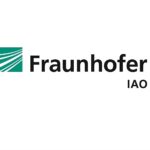

Fraunhofer Institute for Industrial Engineering IAO (Project Lead)
How will people work and live in the future? Scientists at Fraunhofer IAO are researching these questions and applying their findings in a results-oriented manner. A large number of projects are being worked on to develop, evaluate and introduce new technologies and application solutions. Data-centric and cloud-based applications and algorithms based on artificial intelligence and machine learning for applications in the service industries [13], [14], [25], [38], energy industry [1], [30] and logistics [6] are a focus in the IT-related research areas. Software engineering methods [23], application centers [10], [11], [12] and application-oriented demonstrators [24], [26] are important elements in many projects and are part of the IAO's student training in cooperation with the University of Stuttgart [27].
Fraunhofer Institute for Applied Solid State Physics IAF
High-frequency circuits for communication technology, energy-efficient voltage converter modules for electromobility, laser systems for spectroscopic sensor technology, novel hardware for quantum computers and quantum sensors based on diamond - these are just a selection of the developments with which the Fraunhofer IAF is advancing the research and development of innovative semiconductor technologies. As a leading research institute in the field of micro- and nanostructured compound semiconductors, the IAF develops electronic and optoelectronic components based on III/V semiconductors for a wide range of applications, from materials research, design, technology and circuits to modules and systems. Existing activities in the field of quantum computing and quantum technologies include the development of low-noise cryogenic amplifiers for readout electronics and quantum sensors with NV centers in diamond as qubits.


Fraunhofer Institute for Manufacturing Engineering and Automation IPA
Research and development at Fraunhofer IPA focus on organizational and technological tasks in production. It develops and tests methods, components and devices through to complete machines and systems and uses these as examples. With regard to quantum technologies, the IPA has current know-how from application-oriented research and development with a focus on optimization and simulation tasks [15], [16] application of AI/ML [13], [17], [18], [28], [37], development of hybrid cloud/IT architectures based on open source solutions and software engineering processes [18], [19], [44]. In addition, the institute has several test environments and application centers [20], [45], [46], which are available for its own prototype developments of hybrid solutions. From the very beginning, the IPA has supported SMEs and large companies in the development of new business models and technical solutions on the path to digital transformation [21], [22].
Fraunhofer Institute for High-Speed Dynamics, Ernst-Mach-Institut, EMI
The Fraunhofer EMI has expertise in quantifying the resilience of infrastructure networks to disruptions and attack scenarios. A simulation tool has been developed in several EU projects (including RESISTO [50], SATIE [51], SAFETY4RAILS [52]), which calculates the propagation of faults in interconnected networks and analyzes various critical infrastructures, their topologies and their behavior in the event of a fault. Quantum mechanical analogs to these networks were developed in the EFFEKTIF project network with the Albert-Ludwigs-Universität Freiburg. Relevant experience in the simulation of quantum networks and their disruption was gained on the IBM Quantum System One.
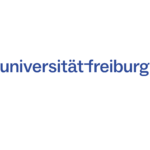
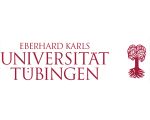
Albert-Ludwigs-Universität Freiburg - Institute of Physics, Department of Quantum Optics and Statistics
Prof. Andreas Buchleitner’s department at the Albert-Ludwigs-Universität Freiburg. conducts physics research, particularly in the field of complex quantum systems, which are becoming increasingly accessible in quantum optical experiments. Current work ranges from statistical properties of interacting many-body quantum systems in different experimental contexts - from cold atoms [53] to NISQ platforms [54], [55], [56] - to theory and numerical treatment of many-body quantum interference [57] or entanglement phenomena [58] to coherent quantum control using non-classical control fields.
University of Tübingen, Chair of Embedded Systems
The Chair of Embedded Systems of Prof. Bringmann combines expertise from the areas of application-specific hardware architectures and optimised mapping of machine learning (ML) on emergent hardware technologies in SEQUOIA. This includes the realisation of application-specific edge computing platforms with integrated AI/DSP accelerators [3], performance analysis and optimised mapping of embedded software in hardware [4] up to technology-specific circuit optimisations [29]. This builds on the Tübingen lighthouse (DFG Cluster of Excellence, BMBF Competence Centre and Cyber Valley) on the topic of AI and ML as well as expertise in novel semiconductor technologies.

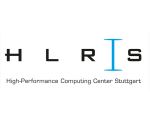
FZI Research Center for Information Technology
The FZI Research Center for Information Technology stands for applied top-level research in the field of computer science and its fields of application. Prof. Reussner's research group at the FZI focuses on the design and quality assurance of software architectures. This includes the modelling of component-based software systems with the Palladio approach [2] as well as the associated analyses for the evaluation and prediction of quality properties such as performance [7] and reliability [5]. The PerOpteryx tool is available for systematic design space exploration [36]. Quality assurance is also being researched with regard to reengineering and evolution of software [40]. The FZI has a first idea for analysing software architecture decisions in the development of hybrid quantum software [42] and has investigated the application of software architecture patterns for fault-tolerant systems to hybrid quantum software in SEQUOIA [43].
University of Stuttgart, High-Performance Computing Center Stuttgart
The HLRS operates one of the fastest supercomputers in Europe and has a large team of experts for »High Performance Computing« (HPC). It offers important tools and solutions to top academic and industrial research in this field, especially in the natural sciences and engineering. The research group "Service Management and Business Processes" at HLRS evaluates current and future technologies that have a high significance for high-performance computing. These include in particular the areas of artificial intelligence (AI), cloud technologies and Gaia-X, as well as quantum computing (QC). The aim is always to create synergies and support hybrid workflows, for example HPC/CI, on a single infrastructure [48], [49].
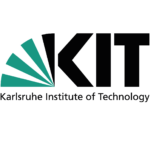
Karlsruher Institut für Technologie, Institut für Informationssicherheit und Verlässlichkeit
Prof. Dr. Schaefer’s research group at the Karlsruhe Institute of Technology is concerned with the quality assurance of software through testing and verification, with a particular focus on configuration and version management. This includes contributions to the development of tools to support constructive correctness in software engineering [59], [60] as well as prioritization of test cases for configurable software systems [61]. Since the beginning of 2022, the group has been building up important expertise at the interface between classical and quantum-based software development as a project partner in the ProvideQ project funded by the Federal Ministry for Economic Affairs and Climate Action (BMWK) and the QuBRA project funded by the Federal Ministry of Education and Research (BMBF).
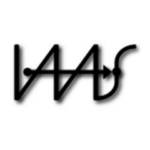
University of Stuttgart, Institute of Architecture of Application Systems (IAAS)
In the first project phase, IAAS dealt with the architecture of application systems. Application systems are software that directly supports one or more of a company's business activities. The architecture is the underlying structure of the application systems, i.e. the building blocks and connections used to create such a system. Through numerous publications in renowned journals and conferences, IAAS has gained a high reputation in the international research community. In addition to publications in the field of classical application architecture (e.g. [8], [47], [31], [39], [9]), IAAS has already been able to place numerous contributions in the up-and-coming research field of software development for quantum computers. Particularly noteworthy are the foundations of a pattern language for quantum algorithms [32], the conception of a platform for quantum software [33], publications on the topic of quantum cloud services and their connection [35], [41] and on the implementation of quantum applications and the associated problems in the NISQ era [34].
References
[1] R. Babel, C. Dukino, A. Gauss., M. Häfele, J. Härle, et al. »Smart Energy Hub. Smart-Data-Plattform für das prognose- und marktbasierte Energiemanagement von Infrastrukturbetreibern und Energieverbünden auf Basis von Sensordaten«, 2018, Fraunhofer Verlag.
[2] S. Becker, H. Koziolek, and R. H. Reussner, »Model-based Performance Prediction with the Palla-dio Component Model« in WOSP ’07: Proceedings of the 6th International Workshop on Software and performance, 2007, pp. 54-65, New York, NY, USA, February 5-8 2007. ACM.
[3] P. Bernardo, C. Gerum, A. Frischknecht, K. Lübeck, and O. Bringmann, »UltraTrail: A Configurable Ultra-Low Power TC-ResNet AI Accelerator for Efficient Keyword Spotting« in IEEE Transactions on Computer-Aided Design of Integrated Circuits and Systems, 2020.
[4] O. Bringmann, W. Ecker, A. Gerstlauer, A. Goyal, D. Müller-Gritschneder, »The next generation of virtual prototyping: Ultra-fast yet accurate simulation of HW/SW systems« in Proceedings of ACM/IEEE Design, Automation & Test in Europe Conference & Exhibition, 2015, Grenoble, France.
[5] F. Brosch, H. Koziolek, B. Buhnova, and R. Reussner, »Architecture-based reliability prediction with the palladio component model« in Transactions on Software Engineering, 38(6), 2011.
[6] J. Drawehn, M. Blohm, M. Kintz, and M. Kochanowski, »Goal-based evaluation of text mining results in an industrial use case« in ICPRAM 2020. Proceedings of the 9th International Conference on Pattern Recognition Applications and Methods: Valletta, Malta, February 22-24, 2020, SciTePress, pp. 183-191.
[7] J. Happe, H. Koziolek, and R. Reussner, »Facilitating performance predictions using software com-ponents« in Software, IEEE, 28(3), pp. 27 -33.
[8] F. Haupt, F. Leymann, and C. Pautasso, »A Conversation Based Approach for Modeling REST APIs« in 12th Working IEEE/IFIP Conference on Software Architecture, 2015, pp. 165-174.
[9] M. Hepp, F. Leymann, J. Domingue, A. Wahler, and D. Fensel, »Semantic Business Process Management: A Vision Towards Using Semantic Web Services for Business Process Management« in IEEE International Conference on e-Business Engineering (ICEBE’05), 2005, pp. 535-540.
[10] IAO, CloudMall Baden-Württemberg. Accessed on: 25.08.2020. [Online]. Available at: https://cloud-mall-bw.de/
[11] IAO, Business Innovation Engineering Center (BIEC). Accessed on: 25.08.2020. [Online]. Available at: https://biec.iao.fraunhofer.de/
[12] IAO, KI-Fortschrittszentrum »Lernende Systeme«. Accessed on: 25.08.2020. [Online]. Available at: https://www.ki-fortschrittszentrum.de/
[13] IAO, Innovationsnetzwerk Digitalisierung für Versicherungen. Accessed on: 25.08.2020. [Online]. Available at: https://www.digital.iao.fraunhofer.de/de/leistungen/Digitalisierung/innovationsnetzwerk-digitalisierung-fuer-versicherungen.html
[14] IAO, SmartAIwork – Zukunft der Betriebsabläufe: Sachbearbeitung zukunftsorientiert gestalten mit Automatisierung durch Künstliche Intelligenz. Accessed on: 25.08.2020. [Online]. Available at: https://www.smart-ai-work.de/
[15] IPA, Roboter- und Assistenzsysteme. Accessed on: 12.01.2023. [Online]. Available at: https://www.ipa.fraunhofer.de/de/Kompetenzen/roboter–und-assistenzsysteme.html
[16] IPA, Deep Grasping – Künstliche Intelligenz perfektioniert den Griff-in-die-Kiste. Accessed on: 13.08.2020. [Online]. Available at: https://www.ipa.fraunhofer.de/de/referenzprojekte/Deep_Grasping.html
[17] IPA, Automatische Bauteilanalyse mit NeuroCAD. Accessed on: 12.01.2023. [Online]. Available at: https://www.ipa.fraunhofer.de/de/Kompetenzen/roboter–und-assistenzsysteme/montage-automatisierung/neurocad.html
[18] IPA, Taktgeber im digitalen Produktionszeitalter. Accessed on: 12.01.2023. [Online]. Available at: https://www.ipa.fraunhofer.de/de/presse/presseinformationen/taktgeber-im-digitalen-produktionszeitalter.html
[19] IPA, Cloud-Plattformen. Accessed on: 12.01.2023. [Online]. Available at: https://www.ipa.fraunhofer.de/de/Kompetenzen/kompetenzzentrum-digitale-werkzeuge-in-der-produktion/cloud-plattformen.html
[20] IPA, Zentrum für Kognitive Robotik. Accessed on: 12.01.2023. [Online]. Available at: https://www.ipa.fraunhofer.de/de/Kompetenzen/roboter–und-assistenzsysteme/zentrum-kognitive-robotik.html
[21] IPA, Future Work Lab. Accessed on: 13.08.2020. [Online]. Available at: https://www.ipa.fraunhofer.de/de/ueber_uns/zusammenarbeit/industry-on-campus/future-work-lab.html
[22] IPA, KMU Anlaufstelle für Digitalisierung: Mittelstand 4.0-Kompetenzzentrum Stuttgart. Accessed on: 13.08.2020. [Online]. Available at: https://www.ipa.fraunhofer.de/de/referenzprojekte/mittelstand40.html
[23] H. Kasper, M. Kochanowski, and V. Pohl, V. »InnoDeck: Card based Innovation Support: A Modular Human-Centered Approach to Facilitate Innovation Workshops« in Bernardino, IC3K 2019, 11th International Joint Conference on Knowledge Discovery, Knowledge Engineering and Knowledge Management. Proceedings. Vol. 3. SciTePress, 2019, pp. 83-91.
[24] M. Kintz, »Thorpedo-Demonstrator – Entdecken Sie die Möglichkeiten von KI und Textanalyse!« Accessed on: 25.08.2020. [Online]. Available at: https://biec.iao.fraunhofer.de/de/Toolbox/THORPEDO.html
[25] M. Kintz, C. Dukino, M. Blohm, and M. Hanussek, »Make Your Customers Happy Again. AI and NLP for a Customer Complaint Management Platform« in AAAI 2020 Workshop on Interactive and Conversational Recommendation Systems (WICRS), New York, 2020.
[26] F. Koetter, M. Blohm, M. Kochanowski, J. Götzer, D. Graziotin et al., »Motivations, Classification and Model Trial of Conversational Agents for Insurance Companies« in 11th International Conference on Agents and Artificial Intelligence, ICAART 2019. Proceedings. Vol.1. SciTePress, 2019, pp. 19-30.
[27] F. Koetter, M. Kochanowski, M. Kintz, B. Kersjes, I. Bogicevic et al., »Assessing Software Quality of Agile Student Projects by Data-mining Software Repositories« in Proceedings of the 11th International Conference on Computer Supported Education, Vol. 2. ScitePress, 2019, pp. 244-251.
[28] K. Kübler, A. Verl, O. Riedel, and M. Oberle, »Simulation-assisted runto-run control for battery manufacturing in a cloud environment« in 24th International Conference on Mechatronics and Machine Vision in Practice (M2VIP), 2017, pp. 1-6. Accessed on: 13.08.2020. [Online]. Available at: https://ieeexplore.ieee.org/document/8211450
[29] J. Kühn, H. Amano, O. Bringmann, and W. Rosenstiel, »Leveraging FDSOI through body bias domain partitioning and bias search« in Proceedings of the 53rd Annual Design Automation Conference (DAC), 2016.
[30] LamA, LamA – Laden am Arbeitsplatz. Accessed on: 12.01.2023. [Online]. Available at: https://www.lama.zone/ https://www.lama.zone/
[31] F. Leymann, »Cloud Computing: The Next Revolution in IT« in Photogrammetric Week ‘09. Wichmann Verlag, 2009, pp. 3-12.
[32] F. Leymann, »Towards a Pattern Language for Quantum Algorithms« in First International Workshop QTOP 2019.
[33] F. Leymann, J. Barzen, and M. Falkenthal, »Towards a Platform for Sharing Quantum Software« in Proceedings of the 13th Advanced Summer School on Service Oriented Computing (SummerSoC), IBM Research Report (RC25685), 2019, pp. 70-74.
[34] F. Leymann and J. Barzen, »The Bitter Truth About Quantum Algorithms in the NISQ Era« in Quantum Sci. Technol. 5, 2020.
[35] F. Leymann, J. Barzen, M. Falkenthal, D. Vietz, B. Weder et al., »Quantum in the Cloud: Application Potentials and Research Opportunities« in Proceedings of the 10th International Conference on Cloud Computing and Services Science (CLOSER), 2020.
[36] A. Martens, H. Koziolek, S. Becker, and R. Reussner, »Automatically improve software architecture models for performance, reliability, and cost using evolutionary algorithms« in Proceedings of the first joint WOSP/SIPEW international conference on Performance engineering, ACM, 2010, pp. 105–116.
[37] Max-Planck-Gesellschaft, Cyber Valley. Accessed on: 25.08.2020. [Online]. Available at: http://www.cyber-valley.de/
[38] J. Neuhüttler, H. Kett, S. Frings, J. Falkner, W. Ganz, and F. Urmetzer, »Artificial Intelligence as Driver for Business Model Innovation in Smart Service Systems« in International Conference on Applied Human Factors and Ergonomics. Springer, Cham, 2020, pp. 212-219.
[39] C. Pautasso, O. Zimmermann, and F. Leymann, »Restful Web Services vs. “Big”’ Web Services: Making the Right Architectural Decision« in Proceedings of the 17th International Conference on World Wide Web (WWW ’08), 2008, pp. 805-814. Accessed on: 25.08.2020. [Online]. Available at: https://doi.org/10.1145/1367497.1367606
[40] R. Reussner, M. Goedicke, W. Hasselbring, B. Vogel-Heuser, J. Keim, and L. Märtin, »Managed Software Evolution«, Springer, Cham, June 2019.
[41] M. Salm, J. Barzen, U. Breitenbücher, F. Leymann, B. Weder et al., »A Roadmap for Automating the Selection of Quantum Computers for Quantum Algorithms« in Proceedings of the 14th Symposium and Summer School on Service Oriented Computing (SummerSoC), 2020.
[42] M. Scheerer, J. Klamroth, and O. Denninger, »Engineering Reliable Hybrid Quantum Software: An Architectural-driven Approach«, 2nd International Workshop on Quantum Software Engineering S Technology (QSET 2021).
[43] M. Scheerer, J. Klamroth, and O. Denninger, »Fault-tolerant Hybrid Quantum Software Systems«, (QSW’22), 2022, https://doi.org/10.1109/QSW55613.2022.00023
[44] D. Schel, C. Henkel, D. Stock, O. Meyer, G. Rauhöft et al., »Manufacturing Service Bus: An Implementation« in Procedia CIRP 67, 2018, pp. 179-184.
[45] S-TEC, Zentrum für Cyberphysische Systeme. Accessed on: 12.01.2023. [Online]. Available at: https://s-tec.de/zentren/zentrum-fuer-cyberphysische-systeme/
[46] S-TEC, Zentrum für Cyber Cognitive Intelligence. Accessed on: 12.01.2023. [Online]. Available at: https://s-tec.de/zentren/zentrum-fuer-cyber-cognitive-intelligence/
[47] J. Wettinger, U. Breitenbücher, and F. Leymann, »Standards-based DevOps Automation and Integration Using TOSCA« in Proceedings of the 7th International Conference on Utility and Cloud Computing (UCC), 2014, pp. 59-68.
[48] L. Zhong, D. Hoppe, N. Zhou, and O. Shcherbakov, »Hybrid workflow of Simulation and Deep Learning on HPC: A Case Study for Material Behavior Determination« in IEEE International Conference on Cluster Computing (CLUSTER), 2021, pp. 698-704.
[49] N. Zhou, L. Zhong, D. Hoppe, B. Pejak, O. Marco, J. Cardona, M. Czerkawski, I. Andonovic, C. Michie, C. Tachtatzis, E. Alexakis, P. Mavrepis, D. Kyriazis, and M. Pospieszny, »CYBELE: A Hybrid Architecture of HPC and Big Data for AI Applications in Agriculture« in HPC, Big Data, and AI Convergence Towards Exascale. CRC Press, 2022, pp. 255-272.
[50] M. Fehling-Kaschek, N. Miller, G. Haab, K. Faist, A. Stolz, I. Häring, A. Neri, G. Celozzi, J. Sanchez and J. Valera, »Risk and resilience assessment and improvement in the telecommunication industry« in P. Baraldi, F. Di Maio, E. Zio (eds.), Proceedings of the 30th European Safety and Reliability Conference and the 15th Probabilistic Safety Assessment and Management Conference, 2020.
[51] C. Köpke, K. Srivastava, N. Miller and E. Branchini, »Resilience quantification for critical infrastructure: Exemplified for airport operations.« in European Symposium on Research in Computer Security, Springer, 2021, pp. 451-460.
[52] N. Miller, Y. Satsrisakul, K. Faist, M. Fehling-Kaschek, S. Crabbe, M. Poliotti, N. Naderpajouh, S. Setunge, S. Ergün, A. Kanak, S. Tanriseven, S. Lekidis, E. Matsika, P. Sick and E. Cazzato, »A risk and resilience assessment approach for railway networks«, Proceedings of the 31st European
Safety and Reliability Conference, 2021.
[53] L. Pausch, E. G. Carnio, A. Rodríguez and A. Buchleitner, »Chaos and Ergodicity across the Energy Spectrum of Interacting Bosons«, Phys. Rev. Lett. 126, 150601, 2021.
[54] A. J. C. Woitzik, P. Kl. Barkoutsos, F. Wudarski, A. Buchleitner and I. Tavernelli, »Entanglement production and convergence properties of the variational quantum eigensolver«, Phys. Rev. A 102, 042402, 2020.
[55] M. Amico and C. Dittel, »Simulation of wave-particle duality in multipath interferometers on a quantum computer«, Phys. Rev. A 102, 032605, 2020.
[56] J. Brugger, C. Seidel, M. Streif, F. A. Wudarski, C. Dittel and A. Buchleitner, »Output statistics of quantum annealers with disorder«, Phys. Rev. A 105, 042605, 2022.
[57] C. Dittel, G. Dufour, G. Weihs, and A. Buchleitner, A., »Wave-Particle Duality of Many-Body Quantum States«, Phys. Rev. X 11, 031041, 2021.
[58] E. G. Carnio, A. Buchleitner and M. Gessner, »Robust Asymptotic Entanglement under Multipartite Collective Dephasing«, Phys. Rev. Lett. 115, 010404, 2015.
[59] T. Runge, I. Schaefer, L. Cleophas, T. Thüm, D. G. Kourie and B. W. Watson, »Tool Support for Correctness-by-Construction«, Proc. of the Intl. Conference on Fundamental Approaches to Software Engineering (FASE), Springer, 2019.
[60] T. Runge, A. Knüppel, T. Thüm and I. Schaefer, »Lattice-Based Information Flow Control-by-Construction for Security-by-Design«, Proc. Of the Intl. Conference of Formal Methods in Software Engineering (FormaliSE), ACM, 2020.
[61] R. Lachmann, S. Schulze, M. Nieke, C. Seidl and V. Schaefer, »System-Level Test Case Prioritization Using Machine Learning«, Proc. of the. Intl. Conference on Machine Learning and Applications (ICMLA), IEEE, 2016.

